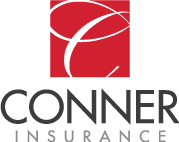General Liability vs. Professional Liability Insurance: What are the Differences?
Business insurance plans protect companies against unforeseen risks affecting operations and finances. Two common policies that firms tend to select are general liability and professional liability—but each serves distinct purposes. The following sections will compare general liability versus professional liability insurance by coverage, exclusions, claims processes, and other vital factors, helping companies determine the best plan.
Defining General Liability & Professional Liability
General and professional liability policies take distinctly different approaches to protecting businesses against claims and lawsuits. Understanding what risks each cover facilitates smart insurance decisions tailored to company operations.
General liability insurance provides broad protection against legal actions connected to third-party bodily injury or property damage from business operations and incidents.
It covers several key exposures:
- Bodily injury claims: Costs fall under the general liability scope if customers or vendors are injured and sued. Slip-and-falls, food poisoning, and defective product injuries commonly lead to liability claims.
- Property damage: Claims connected to third-party property damage due to business operations often trigger general liability policies. For manufacturers, such claims could arise from a defective component damaging customer equipment.
- Personal and advertising injury liability: Some general liability plans may also cover Slander, libel, and copyright infringement events linked to business activities. False or inappropriate advertising can prompt lawsuits covered by this insurance as well.
Professional liability insurance, also called errors and omissions (E&O) coverage, is more specialized—protecting specifically against inadequate work quality, advice, services, or products that fail to meet standards expected of the profession.
Professional liability insurance covers:
- Financial loss claims: If poor quality work, missed deadlines, planning errors, or negligent actions lead to client financial damages, related claims fall under professional liability policies. Malpractice suits are common examples for doctors, lawyers, etc.
- Breaches of client privacy: Confidentiality breaches and loss of sensitive customer data prompt professional liability claims if professional standards of client information handling aren't upheld.
So, while general liability broadly covers injuries and physical damage, professional liability zeros in on financial fallout from subpar services and deviation from industry standards of care. The two complement each other for business owners.
Key Differences in What Each Liability Policy Covers
While general and professional liability plans aim to protect businesses against third-party claims, major differences exist regarding the risks covered. Exclusions also differ since the policies complement rather than expose replicate coverage.
Some notable coverage differences include:
- General liability covers product defects and physical damage not addressed under professional liability plans. Professional liability conversely addresses financial damages from inaccurate advice, privacy violations, planning errors, and poor service quality not covered by general liability.
- Insurance carriers also differ regarding exclusions with some overlap. For example, professional services gaps are common in general liability plans, while financial harm is largely excluded from general liability policies since professional liability would apply.
When claims hit, coverage triggers differ as well. General liability ties largely to business locations, operations, and policies at the time of loss. Professional liability coverage applies to service errors and claims made while a policy is active. Coverage also depends on meeting timely reporting requirements.
The Claims Process
General and professional liability policies follow distinct processes when incidents prompt legal action, given the differing coverage. Insurers handle claims, legal defenses, and settlements or awards differently.
General liability claims often stem from injuries or property damage, defective products, or certain advertising offenses. Examples include:
- Customer slips, falls, and suffers an injury prompting legal action
- Manufacturer defect causes damage to vendor equipment
- False advertising claims lead to lawsuits
In these scenarios, the insurance provider would assign counsel, investigate liability root causes, handle litigation processes, and pay settlements or judgments covered under policy limits. Companies avoid out-of-pocket legal expenses.
Professional liability claims are typically tied to financial damages from poor service quality, errors, and negligence. For instance:
- Inaccurate financial advice leads to client investment losses
- Missed tax filing deadline spurs regulatory fines
- Privacy breach exposes client data
Similarly, the insurer facilitates legal defense, settlement talks, and covered payouts. However, professional liability aftermaths differ given niche policy parameters. Claim-free periods often apply before subsequent mistakes trigger coverage—unlike general liability. And effects on future premiums are far less predictable.
While processes align at a high level, differing coverage specifics, exclusions, and policy limitations drive sharp claims handling differences between general and professional liability protections.
What Impacts Premiums for Each
A wide spectrum of considerations determine general and professional liability insurance pricing. Premium inputs often differ given the differing coverage types.
On the general liability side, leading cost drivers include industry risk factors, number of locations, employee count, years in business, claims history and past legal expenditures, product dangers, and revenue. Also important is consumer access to premises and the availability of strong safety protocols.
For professional liability coverage, premium inputs further weigh specialty complexity, years in practice, practitioner credentials like certifications and education, firm revenues tied to services, project types, inherent risks, and subcontractors' qualifications. State legal environments also factor more prominently for professional liability.
While specifics vary by sector, size, experience, and so on, core inputs remain consistent between carriers. Companies aiming to control insurance costs can utilize multiple deductible levels, risk mitigation protocols, and bundling discounts. Comparing plans during policy renewals also often yields savings.
For more information, read our guide, Understanding Insurance Costs for SMEs.
Why Companies Often Need Both Protections
Rather than viewing general and professional liability insurance as either-or propositions, many companies stand to benefit from securing bundled or complementary plans. Specifically, layered coverage protects small business owners with limited resources. While ideal combinations depend on sector, revenue mix, service roles, and other dynamics, key advantages arise when jointly leveraging both core protections.
Policy blends better insure against legal actions stemming from:
- Customer bodily injuries
- Physical damage affecting stakeholders
- Advertising offense claims
- Financial harm due to service delivery problems
Additional upsides include:
- Mitigating exposures not easily predictable
- Added defense against niche risks like privacy violations
- More bargaining power when negotiating premiums
- Streamlining administration under packaged plans
Coverage gaps could severely impact organizations without layered general and professional liability policies unless intensely focused on just physical products or professional services exclusively. Even primarily product-centric companies still interacting with consumers can't ignore premises and operations-related risks.
Combined general and professional liability intuitively align with the blended hazard spectrum that legal entities, clients, and regulations impose—especially in service-oriented global economies. When combined, the policies provide better protection against unexpected risks that could seriously impact a business.
Protect Your Assets with Comprehensive Coverage.
Specialized Business Insurance from Conner
Operating in Indiana for over 75 years, Conner Insurance takes a customized, consultative approach to protecting organizations across all 50 states. We understand the profound value clients place in running sustainable, community-focused enterprises aligned with greater missions. Our specialty is providing complete, affordable insurance customized to each client's needs to support the ongoing success of their business.
With extensive experience spanning sectors, Conner offers general liability, professional liability policies, and innovative bundled packages. We guide clients to solutions addressing bodily injury, property damage, and financial and service risks reflecting their unique operations and principles.
What Sets Conner Apart
- Specialized expertise in general & professional liability insurance
- Custom-tailored policies aligned with client values
- Consultative approach focused on long-term partnerships
- Proactive risk management guidance & policy reviews
- Claims advocacy & support through resolution
Conner Offerings
- General liability insurance
- Professional liability coverage
- Bundled liability solutions
- Alternative risk financing options
Supplemented by our portfolio of commercial, health, and other vital insurances, Conner enables organizations to secure assurances efficiently under one trusted community partner. Our hands-on approach provides an unmatched client experience through every stage —aligned with our commitment to problem-solving, service, and the pursuit of excellence.
Contact us or call (317) 808-7711 to speak with an advisor about insulating your enterprise with protections designed to support your culture and prosperity. Secure your business with professional coverage today.
Frequently Asked Questions
What’s the difference between errors and omissions and professional liability insurance?
Errors and omissions (E&O) insurance is essentially a form of professional liability insurance geared towards services, so the two terms are largely interchangeable. Both protect businesses against negligence claims and liability for financial harm due to subpar work or advice.
Who needs professional liability insurance?
Though ideal for any service business, professionals like lawyers, health practitioners, architects, engineers, and consultants most require professional liability due to errors and oversight risks inherent when providing skilled services.
Does the law require professional liability?
Unlike general liability insurance, which is legally mandated for most businesses, professional liability isn’t legally required. However, specific industries and professions often necessitate carriers due to skilled service responsibilities.












